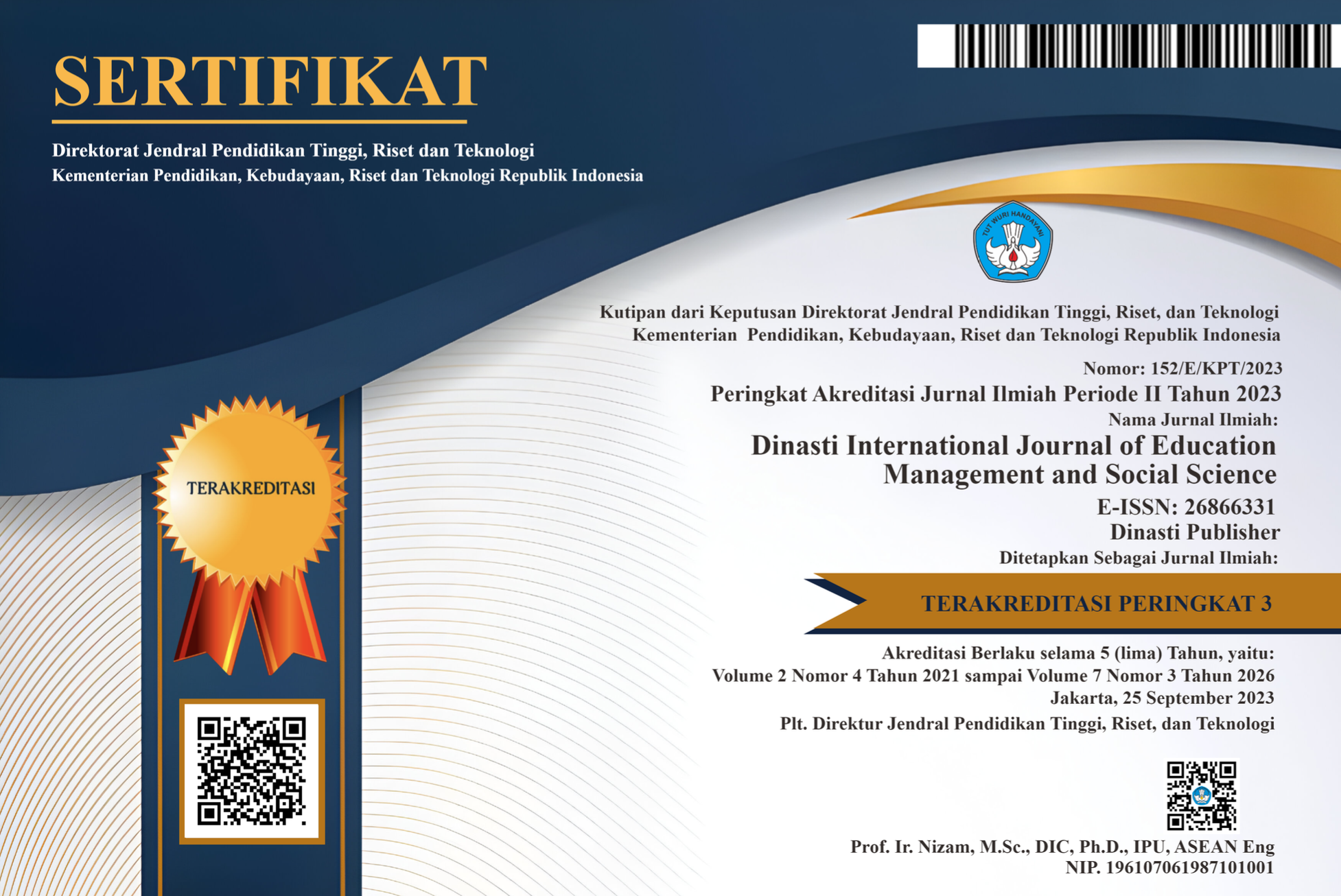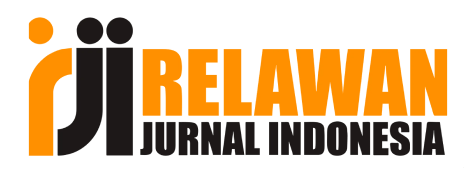APPLICATION OF SAFETY PERFORMANCE BASED ON JOB INVOLVEMENT, PERSONALITY, AND LEARNING ORGANIZATION ON THE CHILD OF PT. ASDP INDONESIA FERRY SURABAYA
DOI:
https://doi.org/10.31933/dijemss.v3i6.1343Keywords:
Safety Performance, Job Involvement, Personality, Learning OrganizationAbstract
Psychological empowerment is useful in improving performance, individuals become more effective, increasing productivity, motivation to work more. Thus, psychological empowerment provides many benefits to every individual who wants to change his life for the better which of course must be supported by the safety performance, so that there are no obstacles in improving performance and productivity. psychological empowerment can have an influence on individuals, organizations, and society. The results in this studyfound that psychological empowerment dimensions of meaning, self-determination, and impact have an influence on physical and mental health, and have a major influence on job satisfaction. Therefore, to overcome the impact caused by the powerlessness of employees, it is necessary to involve the safety performance in empowering its employees. In the development of Psychological Empowerment there is a gap, namely Psychological Safety is a form of employee behavior consisting of work safety components. Forms of work safety behavior, such as using work safety equipment and actively participating in work safety program activities in the organization. Neal and Griffin also added that the concept of safety performance is employee behavior in the workplace related to organizational safety. Psychological Safety is also defined as a form of employee safety behavior at work which includes compliance and participation. Compliance is defined as employee safety behavior at work and maintaining safety at work, participation is described as employee voluntary behavior to develop the organization's work safety. It can be concluded that Psychological Safety is a form of employee behavior at work which includes the prevention of work accidents by means of employee behavior that complies with established safety rules and procedures and voluntarily participates in improving work safety in the company.
References
Alavi, S. (2016). The influence of workforce agility on external manufacturing flexibility of Iranian SMEs. International Journal of Technological Learning, Innovation and Development, 8(1), 111–127. https://doi.org/10.1504/IJTLID.2016.075185
Breu, K., Hemingway, C. J., Strathern, M., & Bridger, D. (2002). Workforce agility: The new employee strategy for the knowledge economy. Journal of Information Technology, 17(1), 21–31. https://doi.org/10.1080/02683960110132070
Crossan, M. M., Lane, H. W., White, R. E., & White, E. (2011). Learning From Intuition To Framework. The Academy of Management Review, 24(3), 522–537. http://www.jstor.org/stable/10.2307/259140
Goldman, S., & Nagel, R. (1993). Management technology and agility; the emergence of a new era in manufacturing. 8(1/2), 18–38.
Gunasekaran, A. (1999). Agile manufacturing: a framework for research and development. International Journal of Production Economics, 62(1), 87–105. https://doi.org/10.1016/S0925-5273(98)00222-9
Habibi. (2018). Kegagalan Sistem Keselamatan Transportasi Laut di Indonesia. Jurnal Aplikasi Pelayaran Dan Kepelabuhanan. https://doi.org/10.1017/CBO9781107415324.004
Hinrichs, U., Carpendale, S., Knudsen, S., & Thudt, A. (2017). Analyzing qualitative data. Proceedings of the 2017 ACM International Conference on Interactive Surfaces and Spaces, ISS 2017. https://doi.org/10.1145/3132272.3135087
Hollweck, T. (2016). Robert K. Yin. (2014). Case Study Research Design and Methods (5th ed.). Thousand Oaks, CA: Sage. 282 pages. The Canadian Journal of Program Evaluation. https://doi.org/10.3138/cjpe.30.1.108
Hopp, W. J., Tekin, E., & Van Oyen, M. P. (2004). Benefits of Skill Chaining in Serial Production Lines with Cross-Trained Workers. Management Science, 50(1), 83–98. https://doi.org/10.1287/mnsc.1030.0166
Hopp, W. J., & Van Oyen, M. P. (2004). Agile workforce evaluation: A framework for cross-training and coordination. IIE Transactions (Institute of Industrial Engineers), 36(10), 919–940. https://doi.org/10.1080/07408170490487759
Lawler, E. E. (1994). Total Quality Management and employee involvement: Are they compatible? Academy of Management Perspectives, 8(1), 68–76. https://doi.org/10.5465/ame.1994.9411302396
Moen, K., & Middelthon, A. L. (2015). Qualitative Research Methods. In Research in Medical and Biological Sciences: From Planning and Preparation to Grant Application and Publication. https://doi.org/10.1016/B978-0-12-799943-2.00010-0
Peters, K., & Halcomb, E. (2015). Interviews in qualitative research. In Nurse Researcher. https://doi.org/10.7748/nr.22.4.6.s2
Ridder, H.-G. (2012). Yin , Robert K .: Case Study Research . Design and Methods. Zeitschrift Für Personalforschung.
Sherehiy, B., & Karwowski, W. (2014). The relationship between work organization and workforce agility in small manufacturing enterprises. International Journal of Industrial Ergonomics, 44(3), 466–473. https://doi.org/10.1016/j.ergon.2014.01.002
Stettner, U., Aharonson, B. S., & Amburgey, T. L. (2014). The Interplay Between Exploration and Exploitation in SMEs. 49(4), 3–13. https://doi.org/10.1108/s1479-067x_2014_0000014020
Sumukadas, N., & Sawhney, R. (2004). Workforce agility through employee involvement. IIE Transactions (Institute of Industrial Engineers), 36(10), 1011–1021. https://doi.org/10.1080/07408170490500997
Valencia, J. C. N., Valle, R. S., & Jiménez, D. J. (2010). Organizational culture as determinant of product innovation. European Journal of Innovation Management. https://doi.org/10.1108/14601061011086294
Wageman, R., & Baker, G. (1997). Incentives and cooperation: The joint effects of task and reward interdependence on group performance. Journal of Organizational Behavior. https://doi.org/10.1002/(SICI)1099-1379(199703)18:2<139::AID-JOB791>3.0.CO;2-R
Downloads
Published
How to Cite
Issue
Section
License
Authors who publish their manuscripts in this journal agree to the following conditions:
- The copyright on each article belongs to the author(s).
- The author acknowledges that the Dinasti International Journal of Education Management and Social Science (DIJEMSS) has the right to be the first to publish with a Creative Commons Attribution 4.0 International license (Attribution 4.0 International (CC BY 4.0).
- Authors can submit articles separately, arrange for the non-exclusive distribution of manuscripts that have been published in this journal into other versions (e.g., sent to the author's institutional repository, publication into books, etc.), by acknowledging that the manuscript has been published for the first time in the Dinasti International Journal of Education Management and Social Science (DIJEMSS).















































